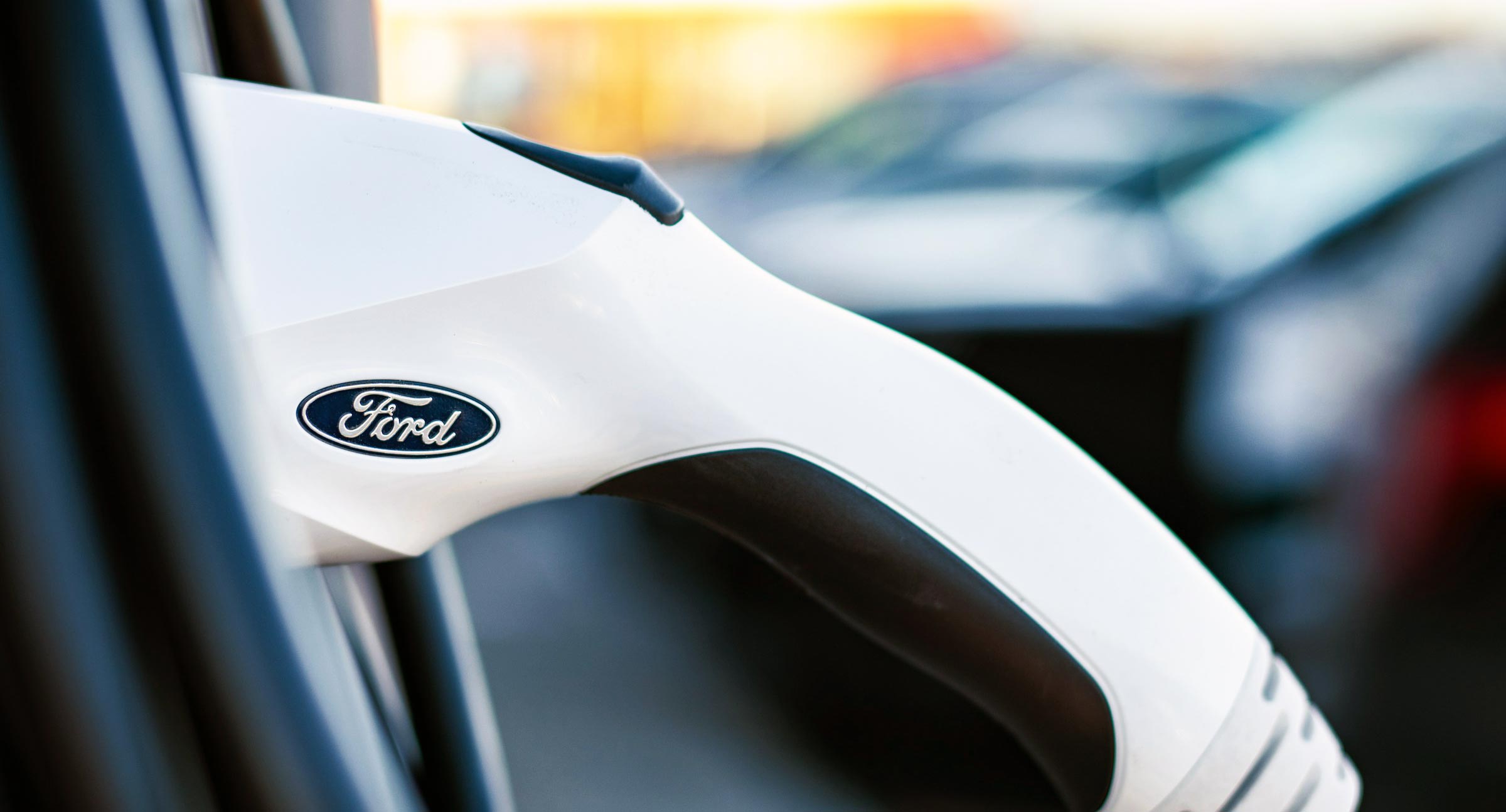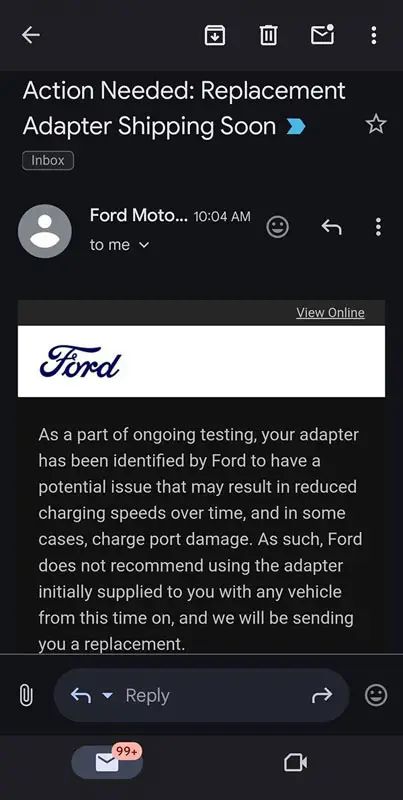Ford is replacing some NACS adapters over a potential issue. Last year in May, Ford’s CEO, Jim Farley, and Tesla’s Elon Musk unveiled a historic alliance on X (previously Twitter). The partnership would allow Ford’s electric vehicle (EV) owners to use Tesla’s vast network of supercharger stations. This move was a major plus for both Ford and the overall electric vehicle market because it used the North American Charging Standard (NACS) to help increase the availability of EV charging for Ford buyers.
Ford and Tesla’s NACS Partnership: A New Era in EV Charging
After Ford and Tesla, the future growth of the EV sector greatly benefited other OEMs owing to this partnership. It was also with Ford that Tesla made its first partnership, setting a domino effect that made almost every single other traditional automaker partner with Tesla. The coordination mainly focused on enabling Ford EV owners to get more direct access to charging points through the NACS, increasing the convenience of the users.
However, the proper development of this partnership takes time, of course. While Ford’s future electric models will have integrated NACS ports starting next year, at present, to access Tesla’s Supercharger network, Ford will offer its current EV owners adapters.
Introducing the first set of NACS Adapters by Ford
Today, Ford started taking orders for NACS adapters in January, and initially, customers could place June 30ders up to June 30, 2024. Because of the high public interest, the deadline for the submission of such applications was 31, and it was shifted to August 31. Ford accepted the industry’s need for pulling, and the company quickly responded to the market, but the current development regarding the new models dampened this move.
Some Problems With Ford’s NACS Adapters
Over the last few weeks, Ford sent notices to some customers, including those who own the F-150 Lightning or the Mustang Mach-E, to alert them to problems with the NACS adapters they were provided with. From Ford’s testing, the company learned that some adapters could degrade the speed at which they charged and potentially cause charge port damage in some cases.

The customers who experienced it were informed through their email, and Ford offered a severe warning that recommended that customers using the product cease using it. Ford said they would soon dispatch new adapters to existing customers and that they should avoid using the affected adapters with any EV.
Capital Allocation: Meeting the Challenge of the Adapter Issue
Ford has been very active in dealing with the NACS adapter problem. Once the fault was detected, the company started notifying the clients and organizing the replacement. Customers were informed that they would be receiving a brand new, undergone-testing NACS adapter within the coming weeks. Ford also had QLG guides indicating how consumers could return the defective adapters so that they could exchange their equipment without much trouble.
During the replacement exercise, Ford advised affected drivers to seek other public charging stations for their cars. The FordPass application and other public charging applications allow drivers to find the nearest charging stations so their charging needs do not get interrupted while waiting for the new adapters.
Ford Power Promise: An Undertaking for Reforms of Endpoint Charging for Battery Electric Vehicles
To meet the rapidly changing tastes of customers, Ford has tried to ease the buying process of its new cars through Ford Power Promise. In this instance, Ford has been extending a Level 2 home charger free of charge, and it has installed it for individuals who are acquiring new EVs. This program is aimed at helping customers bypass some of the difficulties that follow the decision to use electric vehicles by simplifying the processes of ordering home charging setups.
The Ford Power Promise is also intended to demystify the differences between consumers’ expectations of EVs and the reality of owning one. A considerable number of people interested in buying an EV have no idea of the flexibility offered by electric vehicles, including waking up to a charged car. To this end, the automaker is keen on providing straightforward home charging, hoping to ensure more customers overcome these misconceptions and adopt EVs.
The effect of this NACS Adapter problem on the charging of EV
Specifically, the NACS adapter problem might become a factor in lower charging rates in the future. The refueling rate is essential to EV users for long-distance travel and when charging stations are few and far between. Charging efficiency that is too low can cause drivers to waste a lot of their time and thus threaten the whole concept of electric cars.
Furthermore, the problematic adapters can potentially damage the charge port, which is an expensive problem for EV owners to deal with. Ford must act fast to replace these adapters to avoid more complications and to make clients happy with their product.
Conclusion: The interview – Ford’s Pledge for Expansion of EV and Satisfaction of Customers
This means that Melnikov’s thesis that Ford’s cooperation with Tesla and the implementation of the NACS model are crucial for the further unfoldment of the EV charging network in North America is correct. Although the recent problems with the NACS adapters are a pity, it is equally important to note that Ford has taken the proper steps to address the issue and ensure that its customers enjoy the optimal experience.
As Ford proceeds to support EV technology and contribute to infrastructure, deals like the Ford Power Promise will go a long way toward making the ownership of electric vehicles a popular idea. Ford’s response to the NACS adapter problem clearly illustrates that the firm is committed to enhancing the benefits of EVs for its buyers.

Selva Ganesh is the Chief Editor of this Blog. He is a Computer Science Engineer, An experienced Android Developer, Professional Blogger with 8+ years in the field. He completed courses about Google News Initiative. He runs Android Infotech which offers Problem Solving Articles around the globe.



Leave a Reply